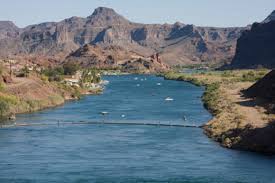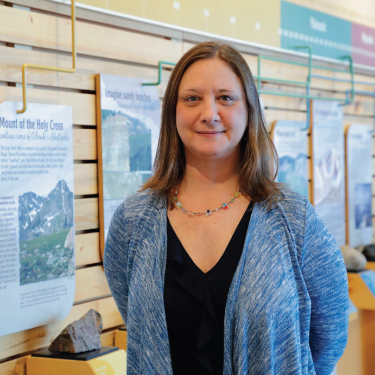 Water, water everywhere, but not a drop to drink. That’s the way it sometimes feels here in Colorado when the rivers are raging. Colorado’s mountains create the headwaters of four major U.S. river basins – The Colorado, Rio Grande, Arkansas, and Platte. This means that we, as a state, have a great privilege and a great responsibility. We are entrusted with the source of these great life giving rivers that provide water for much of the country.
Water, water everywhere, but not a drop to drink. That’s the way it sometimes feels here in Colorado when the rivers are raging. Colorado’s mountains create the headwaters of four major U.S. river basins – The Colorado, Rio Grande, Arkansas, and Platte. This means that we, as a state, have a great privilege and a great responsibility. We are entrusted with the source of these great life giving rivers that provide water for much of the country.
Every Drop Counts
The waters in Eagle County make up numerous small watersheds that all drain into the larger Colorado River. In turn, the Colorado River and its tributaries provide a lifeline for nearly 40 million people in the west, who use it for drinking and other municipal purposes. Its waters also irrigate nearly 5.5 million acres of farmland, providing food for many of these same citizens. Hydropower facilities along the Colorado generate more than 4,200 megawatts of electrical capacity annually, helping to power the west and offsetting the use of fossil fuels. Its waters also support at least 22 federally recognized Native American tribes, 7 National Wildlife Refuges, 4 National Recreation Areas, and 11 National Parks. That’s a lot of land, a lot of people, and a lot of wildlife that all depend on the waters of the Colorado River.
An Incredible Journey
A drop of water in the Colorado River can begin its journey at any number of places. Some find themselves tumbling down the steep creeks of East Vail, flowing over large rocks and down sheer cliffs over waterfalls like Booth Falls, while others take the scenic route and begin their journey near the quaint town of Red Cliff, cascading towards the Colorado through the waters of Turkey or Homestake Creek. But while human adventurers might prefer the path less traveled, all water flows downhill and small creeks come together in the valleys, forming larger rivers with more familiar names, like the Eagle River, which flows through the majority of our valley floor.
We’ve probably past the peak of runoff, but let’s look at the water volumes throughout the watershed on a day close to peak in most areas in order to understand how much water we are talking about. A week ago today, on June 22, the water charging through Gore Creek in the town of Vail measured 693 ft3/s. Compare this to an annual average of 467 ft3/s and a max flow in 2008 of 1040 ft3/s, and you can see that this is an above average year, but we’re not breaking any records. As this water flows, it is joined by the water from smaller creeks, growing until it joins the Eagle River at Dowd’s Junction just north of Minturn. On this same day, the Eagle River measured a much smaller value of 284 ft3/s up high near Red Cliff, but by the time the waters of Gore Creek join it, it had reached a mighty sounding 827 ft3/s! But this river is still in its relative infancy, and it will continue to grow as it is joined by the waters from creeks throughout the valley – Lake Creek, June Creek, Brush Creek, and more.
As the Eagle River weaves its way through the valley, gaining in volume and speed as more waters pour in, it reached a magnificent value of 4010 ft3/s just past the town of Gypsum (on the same day, June 22). It is shortly after this point, at Dotsero, that the waters of the Eagle lose their identity and merge with the mighty Colorado River. And just for comparison, the Colorado River at Dotsero measured a volume of 11,300 ft3/s on this same date, one week ago. Now that’s a lot of water!
But rivers ebb and flow, much like life, and we sometimes have no choice but to go with the flow. When the waters are high, there’s the fun of rafting and tubing, but eventually the water levels will fall and then the fishing improves. It seems like, as long as the water flows, it provides a little something for everyone. Like most things in nature, though, it’s all about the timing and a show of respect for the river and its power. So as long as the rivers continue to run high, enjoy them, but be sure to exercise caution and be safe out there.
Jaymee Squires is the Director of Graduate Programs at Walking Mountains Science Center in Avon. She got to enjoy some of that water out rafting last week. Thanks Heidi and Tom, for an inspiring day out on the river!









